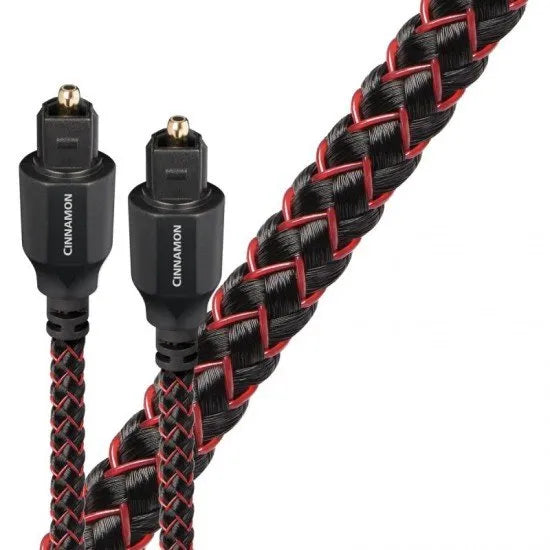AudioQuest Cinnamon, optinis signalinis kabelis
AudioQuest Cinnamon, optinis signalinis kabelis - 0.75 m. - prieš pirkdami pasiteiraukite ar šią prekę turime sandėlyje, jei neturime ji gali būti užsakyta ir atvykti per 2-21 dieną.
▪️ Turite klausimų dėl šios prekės❓Galime pakonsultuoti telefonu +370 683 90000, arba mūsų salone Armatūrininkų g. 1, Kaunas.
📩 Taip pat galite siųsti mums užklausą į kurią atsakysime per 24 val.
Pristatymas
Pristatymas
Lietuvoje siuntas pristatome iki durų DPD kurjeriu per 1-2 darbo dienas, už 4.99€. Užsisakius virš 100€ - pristatymas nemokamas.
Siuntų pristatymas už Lietuvos ribų per 4-10 darbo dienų. Pristatymo kainos nuo 15.00€.
Prekių atsiėmimas parduotuvėje
Prekių atsiėmimas parduotuvėje
Užsakytas prekes internetu galite atsiimti mūsų parduotuvėje adresu Armatūrininkų g. 1, Kaunas. Turėkite su savimi užsakymo nr.
Prieš atvykstant rekomenduojame pasiskambinti +370 683 90000
Darbo laikas: I-V 9:00-18:00
INFORMACIJA
Šiomis dienomis garso pasienyje gausu malonumų, kuriuos teikia HDMI, USB, "FireWire®" ir "Ethernet" jungtys. Tačiau šios dabartinės kartos skaitmeninės technologijos yra tik dalis istorijos, kaip ir iššūkis kurti, gaminti ir rinktis geriausias analogines jungtis ir garsiakalbių kabelius.
- Mažesnės dispersijos didesnio grynumo pluoštas.
- Mažas drebėjimas (skaitmeninės laiko nustatymo klaidos).
- Preciziškai poliruoti skaidulų galai.
APRAŠYMAS
The audio frontier is all abuzz these days with the pleasure possible though HDMI, USB, FireWire® and Ethernet connections. However, these current generation digital technologies are only part of the story, just as the challenge of designing, manufacturing and choosing the best analog interconnects and speaker cables is as important as ever. The S/P-DIF (Sony® Philips Digital InterFace), which arrived in 1983 along with the CD, is still very much a part of our world today. S/P-DIF is transmitted through Digital Coax and Toslink fiber optics (EIA-J), making them still some of the most important cables in electronic entertainment.
While, thanks to HDMI, Toslink is not so often used to connect a DVD player to an A/V receiver, Toslink connectors are common on cable-boxes, TV sets, subwoofers, all sorts of products. And now, the 3.5mm Mini Optical connector, also somewhat incorrectly known as Mini-Toslink, is everywhere … from the 3.5mm dual-purpose headphone jack on a Mac laptop, to inputs on some of the finest portables.
For these many reasons, AudioQuest has refined and renewed our line of serious high performance OptiLink cables. All models and all lengths are now available Toslink to Toslink and Toslink to 3.5mm Mini Optical.
When the question is “how can a fiber-optic cable change the sound?” … the answer is easier to explain than for almost any other type of cable. If the light source were a coherent laser, firing into a vacuum, all the light would stay straight, arriving at its destination at the same time. Even if the LED light source in a Toslink system were coherent, the light entering a fiber-optic cable is scattered and dispersed by imperfections and impurities in the fiber. This can be measured as a loss of amplitude … but amplitude is not the problem, a 50% true loss would have no effect on sound quality.
The problem is that the dispersed light does get through the cable, but only after it has taken a longer path, like a pool ball bouncing off the side-rails, causing it to arrive later. This delayed part of the signal prevents the computer charged with decoding this information from being able to decode properly, or even at all. The inability to decode shows first at higher frequencies (not audio frequencies, this is a mono stream of digital audio information), so reduced bandwidth is a measurable signature of light being dispersed by a fiber. The punch line: The less dispersion in the fiber, the less distortion in the final analog audio signal presented to our ears.
There is another serious dispersal mechanism in the Toslink system. The fiber is a relatively huge 1.0mm in diameter, and the LED light source is also relatively large, spraying light into the fiber at many different angles. Even if the fiber were absolutely perfect, the signal would be spread across time because light rays entering at different angles take different length paths and arrives with different amounts of delay.
The almost complete solution to this problem is to use hundreds of much smaller fibers in a 1.0mm bundle. Because each fiber is limited as to what angle of input can enter the fiber, there is far less variety, and far less dispersion over time. This narrow-aperture effect is similar to how a pin-hole camera can take a picture without a lens … by letting in light at only a very limited range of angles, a picture can be taken, whereas removing the lens from a wider aperture would make photography impossible. Less light gets through a multi-fiber cable, but the light that does get into the fibers comes out within in a much smaller time-envelope.
So there is one problem, the dispersion of light across time … and two avenues towards a better result: less dispersion in the fiber (better polymers and ultimately quartz), and less dispersion by filtering the input angle. How simple is that! Listen and enjoy.





